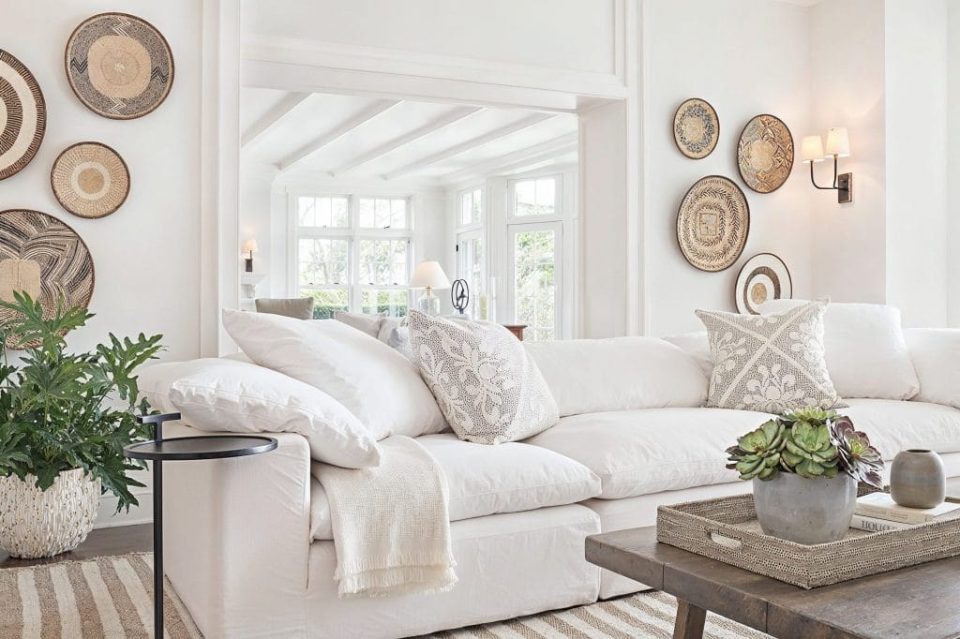In the world of interior design, the minimalist aesthetic has become more than just a passing trend. It has evolved into a timeless philosophy that emphasizes simplicity, functionality, and the art of creating beauty with less. The minimalist style celebrates clean lines, open spaces, and a sense of tranquility—allowing homeowners to enjoy a clutter-free environment that promotes both peace of mind and visual clarity. However, for those attempting to embrace this style, it’s important to understand the key elements that make minimalist design truly effective. Is your home decor missing these minimalist essentials? Let’s take a closer look at the core components that elevate a space into a true minimalist haven.
1. Decluttered Spaces
The cornerstone of minimalist design is a space free from excess. Clutter can disrupt the serene, open feel that minimalism aims to achieve. The first essential step in embracing a minimalist home is to thoroughly declutter your space. This doesn’t mean you need to toss out everything that doesn’t “spark joy,” as Marie Kondo would say, but it does require thoughtful consideration of each item in your home. Start by removing anything that is unnecessary, whether it’s decorative items, mismatched furniture, or even clothing that no longer serves a purpose. Focus on keeping only those pieces that are both functional and meaningful to you.
When a room is decluttered, the design elements you do choose to keep can shine, and the room will feel more spacious and airy. Minimalism doesn’t rely on a lack of items, but on the careful selection of pieces that contribute to the overall harmony of the space.
2. Neutral Color Palette
A neutral color palette is another essential characteristic of minimalist design. The use of soft, muted colors—think whites, creams, soft grays, and beige—creates an atmosphere of calm and tranquility. These tones allow other design elements, such as texture, shape, and form, to take center stage. In a minimalist space, the walls and larger pieces of furniture typically feature neutral hues, providing a subtle backdrop that doesn’t compete for attention.
While a neutral palette is often associated with minimalist design, it doesn’t mean you must limit yourself to just one or two colors. Subtle contrasts can be introduced through the use of different tones or textures, such as a light gray sofa paired with a soft white wall. You might also incorporate a pop of color sparingly through accessories or artwork, but the overall ambiance should remain serene and uncluttered.
3. Functional Furniture
Minimalism is grounded in practicality, and that is evident in the selection of furniture. In a minimalist home, furniture should be functional, streamlined, and purposeful—serving its role without unnecessary ornamentation. Pieces should be simple, with clean lines and geometric forms. Choose furniture that has a dual purpose, such as a coffee table that doubles as storage or a bed with built-in drawers. This approach eliminates the need for extraneous pieces while maintaining functionality.
When selecting furniture, focus on quality rather than quantity. A few well-crafted, timeless pieces will serve you much better than an overstuffed room full of cheap, mismatched furniture. Look for materials like natural wood, metal, and glass, which are often favored in minimalist designs for their sleek, clean appearance and timeless appeal.
4. Negative Space
In minimalist design, negative space—also known as empty space—is just as important as the items that fill a room. This concept refers to the areas in a room that are left intentionally empty, allowing the eye to rest and creating a sense of balance. Negative space helps to prevent a room from feeling overcrowded and overwhelmed by objects. It allows the design elements that do exist to have more impact and allows for a calm, balanced flow of movement within the space.
In a minimalist home, you’ll often see large swaths of open, unadorned walls, expansive countertops with little on them, and wide-open pathways. It’s important to resist the temptation to fill every corner with decor or furniture. Instead, embrace the art of emptiness, allowing the space to breathe and create a sense of peace.
5. Quality over Quantity
Minimalism champions the idea that less is more, but this doesn’t mean sacrificing quality for the sake of simplicity. On the contrary, a minimalist home thrives on the inclusion of fewer, high-quality items that offer lasting value and aesthetic appeal. Instead of accumulating a variety of cheap, mass-produced pieces, invest in timeless, well-made items that will endure both in terms of function and style.
A beautifully crafted piece of furniture, a high-quality rug, or an elegant piece of art can make a significant statement in a minimalist space. These items are often chosen for their craftsmanship, timelessness, and ability to complement the overall design. The minimalist philosophy encourages thoughtful purchasing—selecting items that align with the design and ethos of the space rather than filling it with extraneous or temporary decor.
6. Simple Yet Impactful Art and Decor
Minimalist art and decor are not about filling walls with excess decoration. Instead, they focus on a few key pieces that make a strong statement without overwhelming the room. A single large piece of art, a sculptural object, or a carefully chosen vase can become the focal point of a room, drawing attention in a way that doesn’t disrupt the overall simplicity of the space.
When choosing art and decor, consider pieces that align with your home’s color scheme and overall theme. Black-and-white photography, abstract art, or simple, geometric prints are popular choices for minimalist interiors. These pieces often evoke a sense of calm and add visual interest without detracting from the clean, open feel of the room. Keep decor to a minimum, but make sure that every item contributes to the overall aesthetic in a meaningful way.
7. Natural Light
Incorporating natural light into your home is an essential element of minimalist design. Large windows, open spaces, and strategically placed mirrors can enhance the natural flow of light, making your home feel more expansive and inviting. Sunlight is inherently soothing, and when allowed to flood a room, it not only brightens the space but also contributes to the feeling of openness and clarity.
Minimize the use of heavy curtains or dark window treatments that block light, and instead opt for lighter, airy fabrics or blinds that allow sunlight to filter through. If privacy is a concern, consider sheer curtains that still allow light to penetrate without compromising your sense of openness.
8. Thoughtful Organization and Storage
Storage is a fundamental aspect of minimalist living, as it helps maintain the clutter-free environment that the style is known for. Minimalist homes rely on smart, efficient storage solutions to keep everyday items out of sight, contributing to the clean, streamlined look. Whether it’s built-in shelving, under-bed storage, or multi-functional furniture, the key is to ensure that every item in your home has its designated place.
A minimalist space is organized, but not in an overbearing or overly controlled way. The goal is to create a system where belongings are easily accessible yet neatly stored away. This allows the aesthetic beauty of the space to take center stage while maintaining practicality.
Conclusion
Embracing minimalism in your home decor is not about stripping away personality or warmth; it’s about creating a space that reflects a thoughtful, purposeful approach to design. By focusing on the essentials—decluttering, choosing a neutral color palette, investing in quality pieces, and embracing negative space—you can achieve a home that feels serene, spacious, and timeless. If your home decor is missing any of these minimalist essentials, it may be time to rethink your approach and embrace the beauty of less. With careful curation, minimalist design can turn your home into a haven of simplicity, functionality, and enduring style.

